-
 Bitcoin
Bitcoin $83,301.7640
-2.11% -
 Ethereum
Ethereum $1,799.9842
-4.25% -
 Tether USDt
Tether USDt $0.9999
0.00% -
 XRP
XRP $2.0278
-4.59% -
 BNB
BNB $596.2228
-1.03% -
 USDC
USDC $1.0001
0.01% -
 Solana
Solana $116.8645
-7.35% -
 Dogecoin
Dogecoin $0.1617
-6.43% -
 Cardano
Cardano $0.6450
-5.42% -
 TRON
TRON $0.2321
-2.68% -
 Toncoin
Toncoin $3.6664
-9.62% -
 UNUS SED LEO
UNUS SED LEO $9.4145
0.16% -
 Chainlink
Chainlink $12.8328
-5.91% -
 Stellar
Stellar $0.2589
-3.37% -
 Avalanche
Avalanche $18.1600
-6.54% -
 Sui
Sui $2.2723
-8.51% -
 Shiba Inu
Shiba Inu $0.0...01214
-1.89% -
 Hedera
Hedera $0.1611
-4.12% -
 Litecoin
Litecoin $82.9489
0.17% -
 Polkadot
Polkadot $3.9725
-3.23% -
 MANTRA
MANTRA $6.2949
0.51% -
 Bitcoin Cash
Bitcoin Cash $302.6917
-1.17% -
 Bitget Token
Bitget Token $4.5396
-1.25% -
 Dai
Dai $1.0000
0.00% -
 Ethena USDe
Ethena USDe $0.9998
-0.01% -
 Pi
Pi $0.6249
-7.33% -
 Monero
Monero $213.0395
-1.33% -
 Hyperliquid
Hyperliquid $11.5526
-14.44% -
 Uniswap
Uniswap $5.9462
-2.98% -
 Aptos
Aptos $5.2007
-2.20%
Why is blockchain immutable?
Blockchain's immutability stems from its structure, cryptographic hashing, consensus mechanisms, and decentralization, making data alteration nearly impossible.
Apr 02, 2025 at 10:43 am
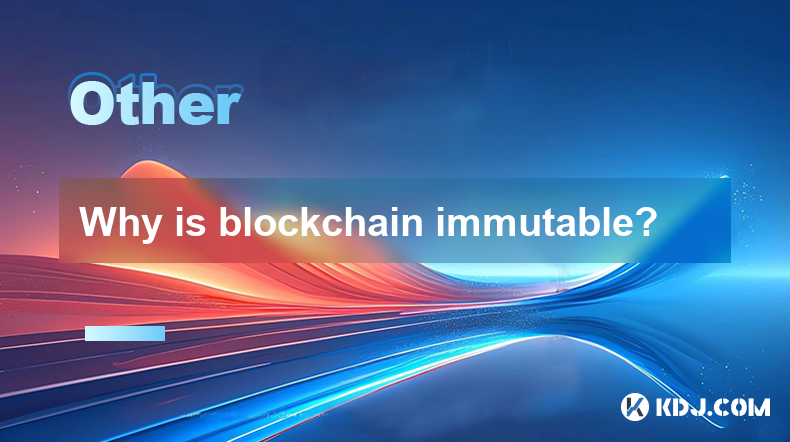
Blockchain technology is renowned for its immutability, a feature that ensures once data is recorded on the blockchain, it cannot be altered or deleted. This characteristic is fundamental to the trust and security that blockchain offers. But why exactly is blockchain immutable? The answer lies in its structure and the way it operates. In this article, we will delve into the reasons behind blockchain's immutability, exploring the technical aspects that make it nearly impossible to change recorded data.
The Structure of Blockchain
At its core, a blockchain is a chain of blocks, where each block contains a list of transactions. These blocks are linked using cryptographic hashes, which are unique digital fingerprints of the data within each block. When a new block is added to the chain, it includes the hash of the previous block, creating a permanent and unbreakable link. This structure is the first layer of defense against data tampering.
Cryptographic Hashing
Cryptographic hashing plays a crucial role in blockchain's immutability. A hash function takes an input (like a block of transactions) and produces a fixed-size string of bytes, typically a digest that represents the original data. Even a minor change in the input data results in a completely different hash. In blockchain, if someone tries to alter a transaction in a past block, the hash of that block would change, breaking the chain of hashes and making the alteration evident to all participants in the network.
Consensus Mechanisms
Blockchain networks use consensus mechanisms to validate and agree on the state of the ledger. Popular mechanisms include Proof of Work (PoW) and Proof of Stake (PoS). These mechanisms ensure that any change to the blockchain must be approved by a majority of the network participants. For instance, in PoW, altering a block would require re-mining not just the altered block but all subsequent blocks, which is computationally infeasible due to the energy and resources required.
Decentralization and Distribution
The decentralized and distributed nature of blockchain further enhances its immutability. Instead of being stored in a single location, the blockchain is maintained across a network of nodes. Each node has a copy of the entire blockchain, and any change to the data must be reflected across all nodes. This makes it extremely difficult for a malicious actor to alter the blockchain, as they would need to compromise a majority of the nodes simultaneously, a task that is practically impossible in large, well-distributed networks.
Time Stamping and Block Finality
Another factor contributing to blockchain's immutability is the use of time stamping and the concept of block finality. Each block in the blockchain is timestamped, providing a clear record of when transactions were added. Once a block is added to the chain and confirmed by the network, it is considered final. In many blockchain systems, once a certain number of blocks are added after a given block, it becomes increasingly difficult to alter that block, as it would require redoing the work of all subsequent blocks.
The Role of Smart Contracts
Smart contracts, self-executing contracts with the terms directly written into code, also contribute to blockchain's immutability. Once deployed on the blockchain, smart contracts are immutable and cannot be changed. This ensures that the rules governing transactions and interactions on the blockchain remain consistent and tamper-proof. Any attempt to alter a smart contract would require altering the blockchain itself, which, as we've discussed, is highly improbable.
The Economic Incentive to Maintain Immutability
Economic incentives play a significant role in maintaining blockchain's immutability. In networks like Bitcoin, miners are rewarded for validating transactions and adding new blocks to the chain. Any attempt to alter the blockchain would require significant resources and would likely be detected by other participants, leading to a loss of trust and potential financial loss for the attacker. This economic disincentive further reinforces the immutability of the blockchain.
The Role of Forks
While blockchain is designed to be immutable, there are instances where changes can be made through a process known as a fork. A fork occurs when the blockchain splits into two paths, either due to a disagreement among participants or to implement new features. There are two types of forks: soft forks and hard forks. Soft forks are backward-compatible changes that do not require all nodes to upgrade, while hard forks are more drastic changes that require all nodes to upgrade to the new version. Forks can introduce changes to the blockchain, but they are transparent and require consensus among participants.
The Importance of Immutability in Blockchain Applications
Immutability is crucial for various blockchain applications, such as cryptocurrencies, supply chain management, and identity verification. In cryptocurrencies, immutability ensures that once a transaction is recorded, it cannot be reversed, providing a high level of security and trust. In supply chain management, immutability allows for a transparent and verifiable record of product movement and ownership. For identity verification, immutability ensures that once an identity is verified and recorded, it cannot be altered, providing a secure and reliable method for identity management.
Challenges and Limitations
While blockchain's immutability is a powerful feature, it is not without challenges and limitations. One challenge is the potential for errors or fraudulent transactions to be permanently recorded on the blockchain. Once a transaction is added to the blockchain, it cannot be easily removed, even if it was made in error. This can lead to issues in applications where the ability to correct mistakes is important. Additionally, the immutability of blockchain can make it difficult to comply with regulations that require data to be deleted or modified, such as the right to be forgotten under GDPR.
Future Developments and Enhancements
As blockchain technology continues to evolve, researchers and developers are exploring ways to enhance its immutability while addressing its limitations. One area of focus is the development of more efficient consensus mechanisms that can further secure the blockchain against tampering. Another area is the exploration of hybrid systems that combine the benefits of blockchain with other technologies to provide more flexibility in data management. These developments aim to maintain the core principle of immutability while making blockchain more adaptable to various use cases.
Common Questions Related to Blockchain Immutability
Q: What is the main reason behind blockchain's immutability?
A: The main reason behind blockchain's immutability is its structure, which uses cryptographic hashes to link blocks in a chain. Any change to a block would require recalculating the hashes of all subsequent blocks, making it computationally infeasible.
Q: How does consensus contribute to blockchain's immutability?
A: Consensus mechanisms like Proof of Work and Proof of Stake ensure that any change to the blockchain must be approved by a majority of the network participants. This makes it extremely difficult for a single entity to alter the blockchain without the agreement of the network.
Q: Can blockchain data ever be changed?
A: While blockchain is designed to be immutable, changes can be made through a process called a fork. However, forks require consensus among participants and are transparent, ensuring that any changes are agreed upon by the network.
Q: What are the potential drawbacks of blockchain's immutability?
A: One potential drawback is the inability to correct errors or remove fraudulent transactions once they are recorded on the blockchain. Additionally, immutability can make it challenging to comply with regulations that require data to be deleted or modified.
Q: How are developers addressing the limitations of blockchain's immutability?
A: Developers are exploring more efficient consensus mechanisms and hybrid systems that combine blockchain with other technologies to enhance its immutability while providing more flexibility in data management. These efforts aim to maintain the core principle of immutability while making blockchain more adaptable to various use cases.
Disclaimer:info@kdj.com
The information provided is not trading advice. kdj.com does not assume any responsibility for any investments made based on the information provided in this article. Cryptocurrencies are highly volatile and it is highly recommended that you invest with caution after thorough research!
If you believe that the content used on this website infringes your copyright, please contact us immediately (info@kdj.com) and we will delete it promptly.
- Sentient Launches Open-Source Deep Search (ODS), a New Era for Artificial Intelligence
- 2025-04-03 18:45:13
- Qubetics ($TICS), ImmutableX, and Filecoin Are Top 3 Cryptos to Buy in 2025
- 2025-04-03 18:45:13
- Bitcoin Market Momentum Stalled After US President Donald Trump Announced New Tariffs
- 2025-04-03 18:40:12
- Game Development Firm Enish Buys the Dip, Investing ¥100M in Bitcoin
- 2025-04-03 18:40:12
- The Memecoin Market Continues to Draw In Capital from Both Retail and Institutional Investors
- 2025-04-03 18:35:13
- The Erstwhile-Popular Memecoin, $PWEASE, Finds Its Market Cap and Holder Base Sinking
- 2025-04-03 18:35:13
Related knowledge
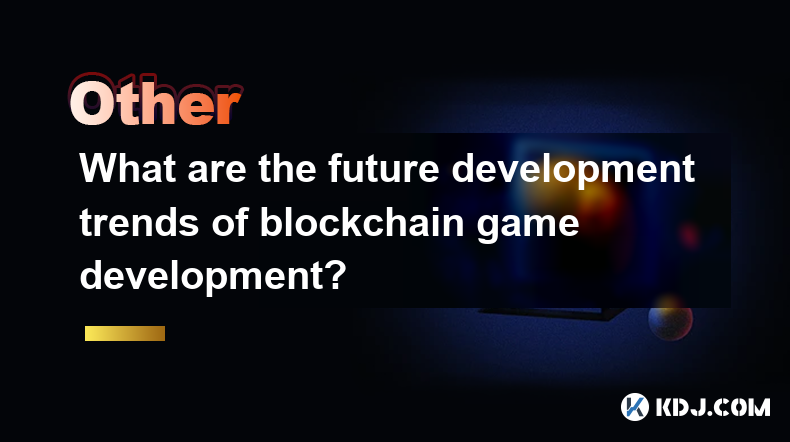
What are the future development trends of blockchain game development?
Apr 03,2025 at 05:00am
Blockchain technology has revolutionized various industries, and gaming is no exception. As we look to the future, several trends are set to shape the development of blockchain games. These trends not only promise to enhance the gaming experience but also to integrate blockchain technology more seamlessly into the gaming ecosystem. Let's explore these t...
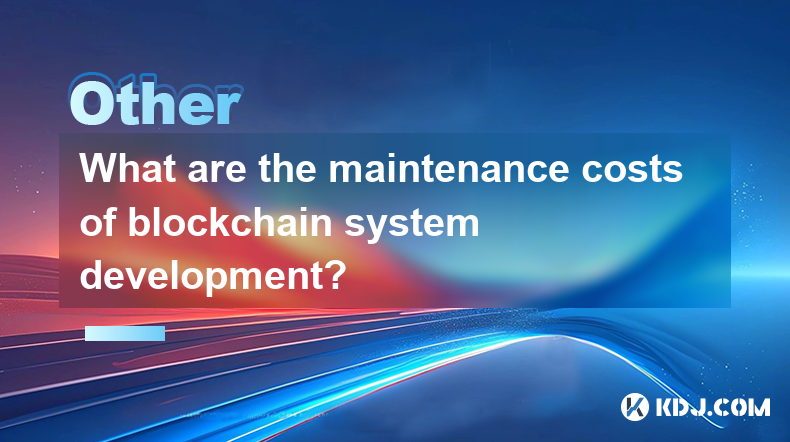
What are the maintenance costs of blockchain system development?
Apr 03,2025 at 06:07pm
The maintenance costs of blockchain system development are multifaceted and depend on various factors. These costs can include technical maintenance, security updates, infrastructure expenses, and personnel costs. Understanding these elements is crucial for anyone planning to develop or maintain a blockchain system. Technical MaintenanceTechnical mainte...
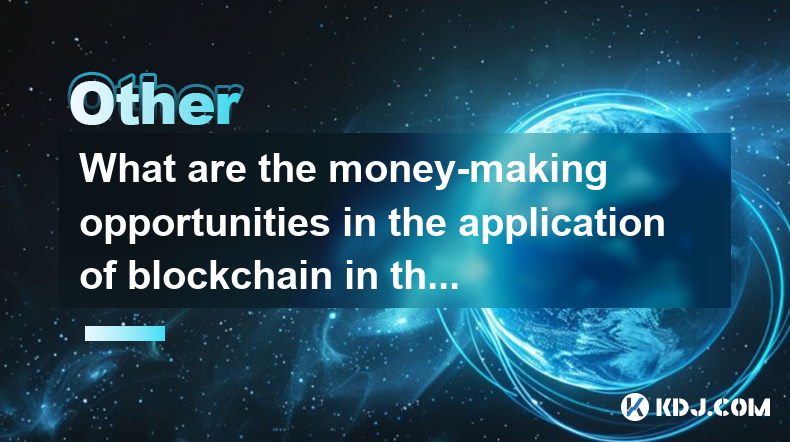
What are the money-making opportunities in the application of blockchain in the medical industry?
Apr 03,2025 at 03:35am
The integration of blockchain technology into the medical industry presents a myriad of money-making opportunities that can revolutionize healthcare systems. Blockchain's inherent characteristics, such as transparency, security, and immutability, make it an ideal solution for various medical applications. By leveraging blockchain, companies can develop ...
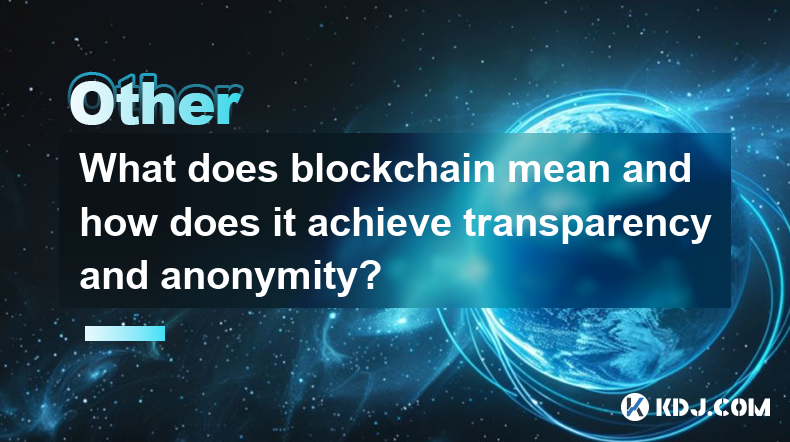
What does blockchain mean and how does it achieve transparency and anonymity?
Apr 03,2025 at 11:28am
Blockchain technology is a decentralized, distributed ledger that records transactions across numerous computers. It ensures that once data is recorded, it cannot be altered retroactively without the alteration of all subsequent blocks and the consensus of the network. This technology underpins cryptocurrencies like Bitcoin and Ethereum, providing a sec...
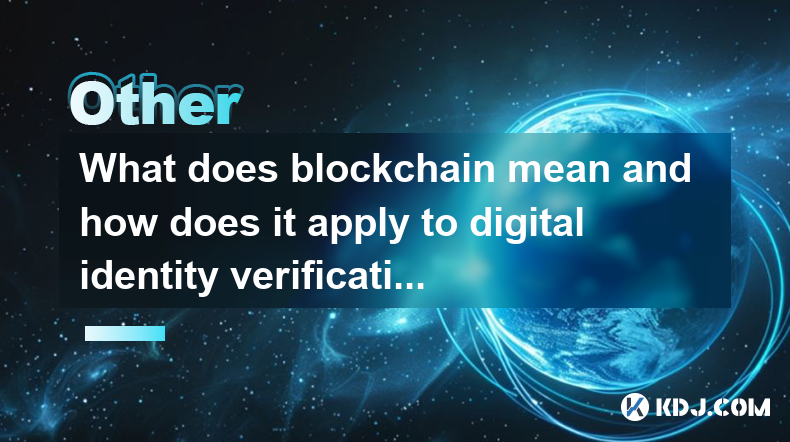
What does blockchain mean and how does it apply to digital identity verification?
Apr 03,2025 at 02:21am
Blockchain technology, at its core, is a decentralized and distributed digital ledger used to record transactions across numerous computers. This ensures that the recorded data cannot be altered retroactively without the alteration of all subsequent blocks and the consensus of the network. The concept of blockchain was initially devised for the digital ...
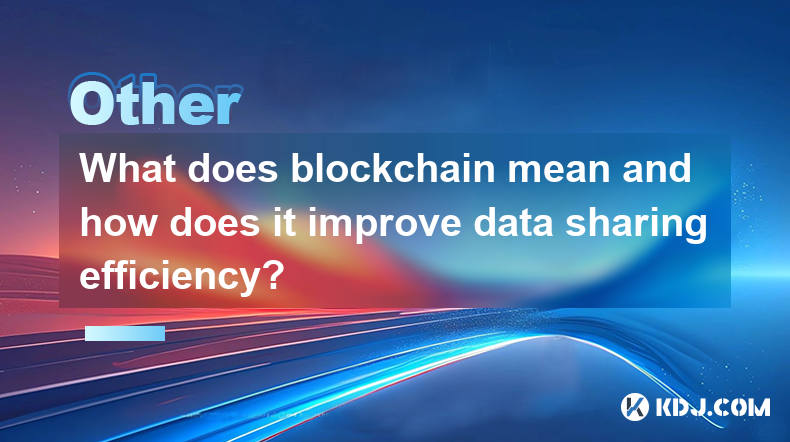
What does blockchain mean and how does it improve data sharing efficiency?
Apr 03,2025 at 03:15pm
Blockchain is a decentralized and distributed digital ledger technology that records transactions across numerous computers. This technology ensures that once data is recorded, it cannot be altered retroactively without the alteration of all subsequent blocks and the consensus of the network. This characteristic makes blockchain highly secure and transp...

What are the future development trends of blockchain game development?
Apr 03,2025 at 05:00am
Blockchain technology has revolutionized various industries, and gaming is no exception. As we look to the future, several trends are set to shape the development of blockchain games. These trends not only promise to enhance the gaming experience but also to integrate blockchain technology more seamlessly into the gaming ecosystem. Let's explore these t...

What are the maintenance costs of blockchain system development?
Apr 03,2025 at 06:07pm
The maintenance costs of blockchain system development are multifaceted and depend on various factors. These costs can include technical maintenance, security updates, infrastructure expenses, and personnel costs. Understanding these elements is crucial for anyone planning to develop or maintain a blockchain system. Technical MaintenanceTechnical mainte...

What are the money-making opportunities in the application of blockchain in the medical industry?
Apr 03,2025 at 03:35am
The integration of blockchain technology into the medical industry presents a myriad of money-making opportunities that can revolutionize healthcare systems. Blockchain's inherent characteristics, such as transparency, security, and immutability, make it an ideal solution for various medical applications. By leveraging blockchain, companies can develop ...

What does blockchain mean and how does it achieve transparency and anonymity?
Apr 03,2025 at 11:28am
Blockchain technology is a decentralized, distributed ledger that records transactions across numerous computers. It ensures that once data is recorded, it cannot be altered retroactively without the alteration of all subsequent blocks and the consensus of the network. This technology underpins cryptocurrencies like Bitcoin and Ethereum, providing a sec...

What does blockchain mean and how does it apply to digital identity verification?
Apr 03,2025 at 02:21am
Blockchain technology, at its core, is a decentralized and distributed digital ledger used to record transactions across numerous computers. This ensures that the recorded data cannot be altered retroactively without the alteration of all subsequent blocks and the consensus of the network. The concept of blockchain was initially devised for the digital ...

What does blockchain mean and how does it improve data sharing efficiency?
Apr 03,2025 at 03:15pm
Blockchain is a decentralized and distributed digital ledger technology that records transactions across numerous computers. This technology ensures that once data is recorded, it cannot be altered retroactively without the alteration of all subsequent blocks and the consensus of the network. This characteristic makes blockchain highly secure and transp...
See all articles























































































